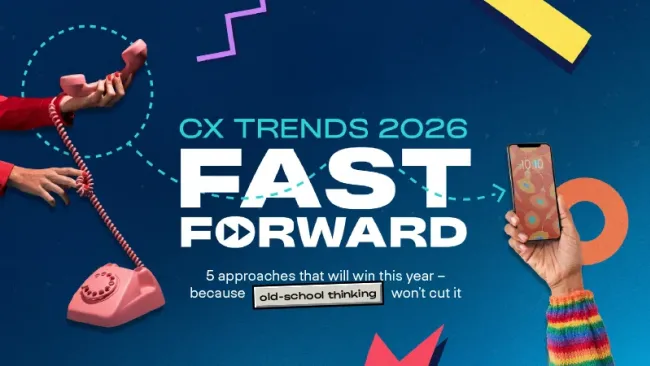Speed makes the world go around. Next-day shipping and automated shopping suggestions have hastened the shopping process, but when it comes to customer support, reaching out to traditional contact centers seems like sluggish trip back in time. That’s why organizations are investing in digital transformation initiatives that improve the customer experience across all channels. Enter channel orchestration.
Why channel orchestration?
You hear from many leaders how automation has risen to join the human workforce. Bots and self-service tools can quickly handle straightforward tasks and answer simple questions. However, no two customers are the same, and as much as we like to pin their digital experiences on to the likes of Gen Z, and physical shopping on generations such as Baby Boomers, it’s never that simple. Bots still aren’t perfect, and it can be frustrating to repeat a question for a simple need. As a result, customers have a unique desire for the ease of digital shopping and the tangible experience of a brick-and-mortar service.
From social media and mobile apps to chat, video, and voice, more organizations are coming to the realization that they need to overhaul their customer experience and provide customers with the right kind of support across all channels.
The benefits
Channel orchestration is about creating a seamless experience that effectively integrates multiple traditional and digital support channels to balance customer expectations and business needs. It leverages the customer preferences for these different channels while driving down costs and improving the overall quality of the experience. What’s more, adding operational efficiencies can eliminate extraneous uses of company resources and employee effort to increase savings. As my colleague Tim Keefe describes it, “Just as an orchestra is composed of various instruments coming together harmoniously, it’s about bringing different interaction channels together to perform harmoniously for the customer.” So how do you organize your orchestra?
Bring it all together
To get your channel orchestration started today, there are 4 keys to success:
1. Partnership
Collaboration and open dialogue between various stakeholders across channels and lines of business is important for developing initiatives in which everyone feels ownership. Appointing a dedicated change management team or point person to provide focus and keep track of the initiative’s progress is also important.
2. Contact center operational expertise
Associates are at the heart of any changes made to the customer experience. A deep understanding of associate workflow, tools, and challenges is essential to ensure initiatives fit into the associate’s daily flow and has a minimal impact on average handle time or call resolution.
3. Rigorous test-and-learn design
By addressing a measurement plan at the beginning of the process and designing a solid test-and-learn methodology, brands will be able to gain valuable insights during the pilot period and deep drilldowns at the end of the initiative to inform future efforts.
4. Detailed rollout plan
Providing a data-driven prioritization of future efforts and a fact-based business case based on quantitative insights helps gain senior leadership buy-in. The goal is to have all necessary parties ready, willing, and able to go live with the initiative and begin realizing the benefits as quickly as possible.
Is the CX conductor ready?
Before you deploy your channel orchestration initiative, it’s important to identify some questions around metrics and strategy to help determine the scope and direction. For example: Which channels are my customers using? What would constitute success? If you want to transition customers to self-service, ask what percentage of customer transactions are already completed in self-service versus other channels, and what percentage of those calls can be resolved through self-service?
A case in point
When one of our financial services clients was experiencing high call volumes in its contact center despite efforts to digitally transform the customer experience, we evaluated the call volume to help identify four customer segments, each with a different reason for calling. The four segments were: No self-service option, not aware of self-service, tried self-service unsuccessfully, and aware of self-service option but didn’t try it.
We then launched a test-and-control pilot to identify the segments that were most likely to respond to a customer education program on the benefits of self-service channels. This led to strategies like identifying opportunities to create new SSOs, educating associates about SSOs available to them, and identifying the reason for SSO failure, and opportunities to improve.
By analyzing the reasons customers were calling and developing a test-and-control model to refine those insights, we identified the most effective way to address the problem—unnecessarily high call volumes—and directed callers to other options that better met their needs. This also enabled associates to focus on more complex consultative calls or account issues. As a result, customers received better service and the client reduced unnecessary costs.
An engagement crescendo
Harmonious support hinges on understanding the channels your customers use. A successful orchestration requires the complete collaboration and synchronization of its musicians and composter. Customer support channels too must be aligned to play beautifully. If implemented correctly, channel orchestration can help your organization meet customers’ unique needs in a composed and cost-effective system.
To learn more about how to align the best channels to the right interactions, check out Make Your CX Efforts Sing with Channel Orchestration.
















